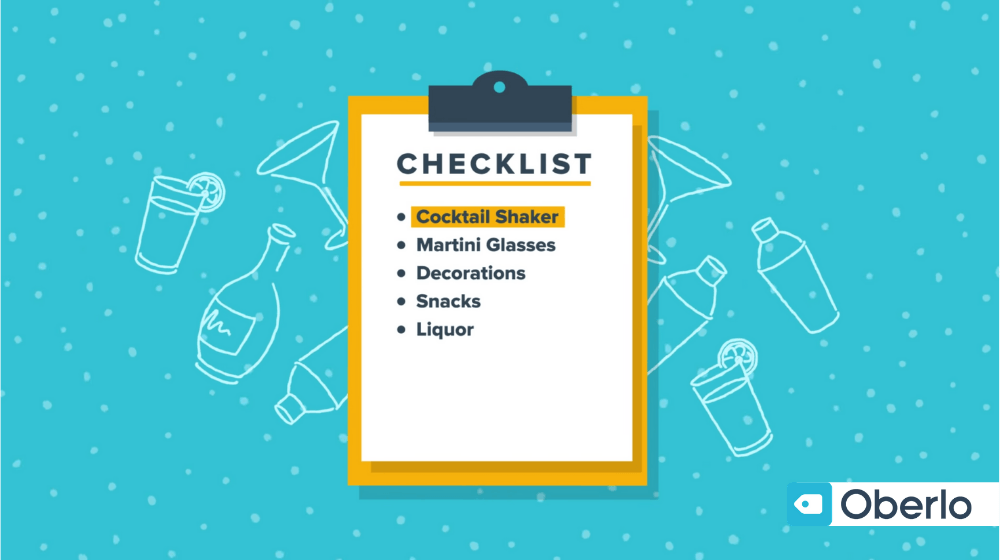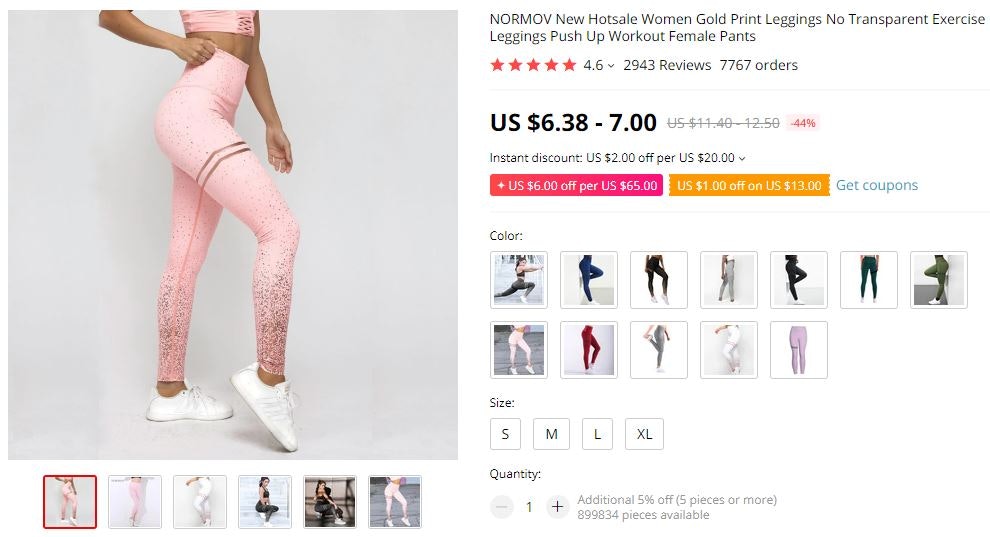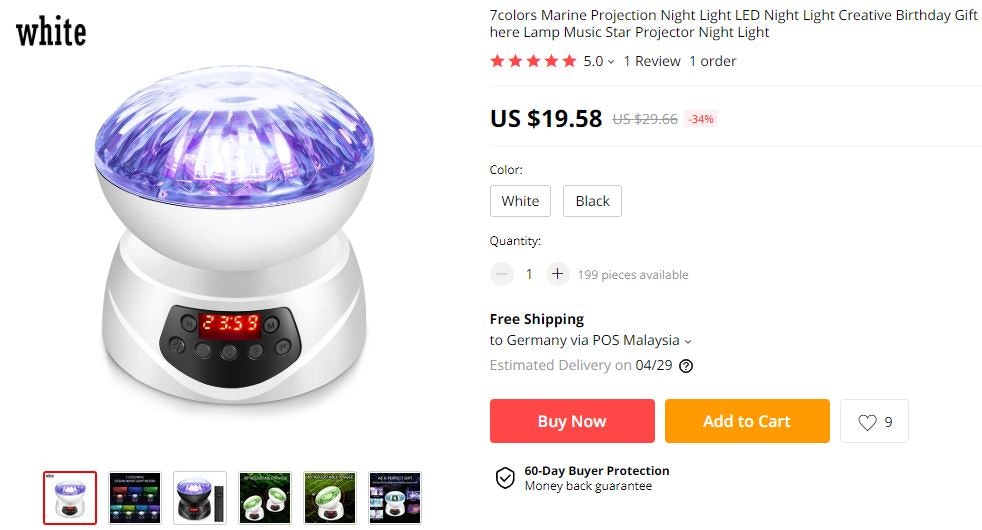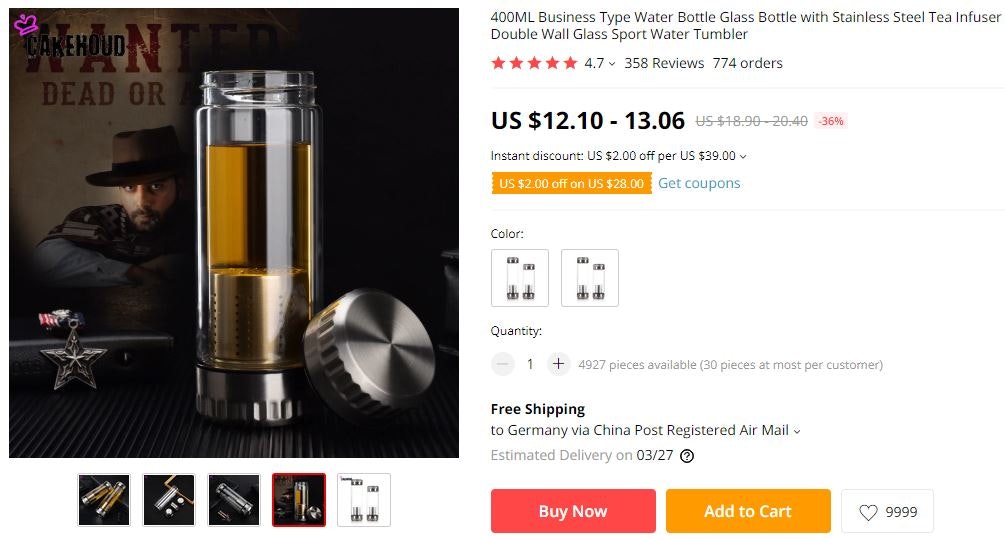Dropshipping vs Amazon: How to Succeed as a Dropshipper in 2020
Video transcript: We’re gonna do something a little different. A lot of you, and I mean a lot of you have left comments about dropshipping vs Amazon. It’s a really good question and it deserves a complete answer. After all, if you’re going to start dropshipping with Oberlo and Shopify […]
Video transcript: We’re gonna do something a little different. A lot of you, and I mean a lot of you have left comments about dropshipping vs Amazon. It’s a really good question and it deserves a complete answer. After all, if you’re going to start dropshipping with Oberlo and Shopify in 2019 or 2020, you need to know about your ecommerce competition.
So we’re gonna talk about how you, the newbie dropshipper, can compete against Amazon. And we’re going to do it with a special guest star. The way you’ll learn is by following a customer’s experience on Amazon and on a dropshipping website. If you’re ready, let’s dive into the pros and cons of dropshipping vs Amazon.



Understanding Customer Psychology
Okay, we’ve got to start with some customer psychology. So let’s start by talking about how customers shop with dropshipping vs Amazon and what that means for you.

→ Click Here to Launch Your Online Business with Shopify
There’s someone I want to introduce you to. Meet Magda, Magda loves to host cocktail parties, and with the holidays around the corner, Magda is looking forward to hosting some swanky holiday cocktail parties. Magda already owns some products that help her host great parties. Now, she wants to buy a cocktail shaker so she can create fabulous drinks. So Magda opens her laptop and heads to Amazon to search for cocktail shakers.
Now, I know, so far this doesn’t sound very good for dropshippers. Magda wants a cocktail shaker, but instead of browsing Facebook ads, she heads straight for Amazon. However, let’s pay close attention to Magda’s mindset here.
Shopping on Amazon
In this scenario, Magda is in planning mode. She knows she needs certain items to throw a cocktail party, and she knows that a cocktail shaker is one of those items. Cocktail shakers are pretty basic, there’s not a lot to differentiate one from the other. So she’s looking for a cheap cocktail shaker so she could just check that item off her list.
In just a minute, you’ll learn how Magda’s mindset is different when she’s buying from a dropshipping store, and that’s hugely important for you to understand if you want sales. For now though, there are a few more things to point out about Magda’s Amazon shopping experience.
On Amazon, Magda searches for the exact item she intends to buy, cocktail shaker. In the search results, she sees multiple sellers selling what is essentially the same product. Without even clicking on these products, she also sees each product’s price and customer reviews.
Magda identifies a cocktail shaker that has a good enough balance of high reviews and a low price point. Magda clicks on the product and does a quick scroll through the page to look at product photos and customer reviews. Magda isn’t too concerned about product specifications because this isn’t a complicated product. She’s just looking for red flags, any reason not to buy. Seeing none, Magda buys the cocktail shaker. With that Magda leans back and relaxes. She bought the item she knows she needs and her job here is done.

Avoid Commonplace Items
We’re not done with Magda yet, but let’s pause for a minute. There’s an important takeaway here. Don’t sell products that customers can easily search for. If you sell a commonplace item that customers know the name of, it’s more likely that customers will simply search for that item on Amazon before even discovering your store. So instead, sell these three kinds of products.
1. Products With Multiple Features
The first are products with multiple features, products like this key tool are hard to search for because they combine features of other products. For example, this product has features from a Swiss army knife, a keychain and a pair of scissors, which makes it really hard to search for it. What is it? Keychain scissors? No. Pocket knife? No.
Unlike the cocktail shaker, it would be really hard to search for this product on Amazon. So a customer that sees an ad for it is gonna have a hard time going to Amazon to find your competition. Sell products that combine problem-solving features, but are hard to describe in one word.
2. Products With Unique Patterns
The second kind of product you wanna sell are products with unique patterns. Dropshipper Ryan Carroll made boatloads of money selling bikinis. And I’ve made money selling leggings. The reason why we got sales, well, once customers see something in a pattern or design that they like, they’re not going to try to find that pattern on Amazon.

For example, this pair of leggings is selling like crazy, but if a customer who wanted it, tried to find it on Amazon, they’d have to spend hours searching. I searched for pink sparkle leggings, and I still didn’t see it on the first page of results. If I were a customer, I’d give up and buy these leggings just from the store that I found them on. The bottom line here is that if you’re selling easy-to-find products, sell them in hard to describe patterns or designs.
3. Retrofitted products
The third kind of product you wanna sell are products that I call retrofitted products. Honestly, this strategy is really what sets apart the novice dropshippers from the pros. Novice dropshippers sell items exactly as they are described on AliExpress.

They would sell a projection night light as a projection night light. But pro dropshippers would retrofit this product, that is, they would think of a use for this product that the manufacturers didn’t or they would think of a target audience for this product that the manufacturers didn’t have in mind when they created it.

In this case, a pro dropshipper would market this night light as a mermaid cove night light, which makes this product seem really special. And in customers’ minds, this is a different product from the ones they might see on Amazon. For another example of this kind of retrofitted product and the pros and cons of dropshipping vs Amazon, let’s return to Magda.
Relaxed Social Media Browsing
Magda is browsing on Instagram, Facebook, and other social media sites for some cocktail party inspiration. Right now, Magda isn’t looking for anything in particular. She’s daydreaming. She’s fantasizing about how much fun it will be to host the perfect cocktail party. She’s thinking of all the friends she’ll bring together and she’s imagining them having a good time. Suddenly, Magda stops scrolling. She sees an ad for a vodka infuser, with this product Magda can make custom flavored vodkas to add to her cocktails.
Pause.
Magda just saw an ad from a dropshipping store and the product that’s being advertised isn’t a vodka infuser, at least not on AliExpress. It’s just a cool looking infusion water bottle. However, the dropshipper, in this case, is a savvy bartender and that bartender has tested this product. And he knows it works just as well at infusing vodkas as it does at infusing water. So he took a product that everyone else is marketing as a water bottle and created a whole new product out of it. That’s brilliant, but there’s something else important going on here.
The dropshipper paid Facebook to get in front of people who are scrolling. Like Magda, the audience for this ad isn’t looking for products on Facebook, instead, they’re socializing, they’re bored, they’re daydreaming. They are not looking for a specific product. Magda clicked on this ad because it caught her mid daydream. It offered a product she didn’t know she needed to make her cocktail parties great.
This is an important distinction that you should take advantage of to compete with Amazon and here’s the key takeaway:
Advertise products where customers are not looking for products.
That’s how you’ll hook customers before they even think to go shopping on Amazon. You’ll get in front of customers who are in a completely different mindset. They’re not looking for a specific product to buy. Instead, they’re open to new product suggestions.
Advantages of Dropshipping vs Amazon
Oh, but the dropshipping advantage over Amazon doesn’t end there. Let’s go to the vodka infuser product page to learn more. When Magda clicked on the Facebook ad, she was taken directly to this product page. This Shopify product page has three advantages over Amazon.
First, it has a description that appeals to Magda ‘s emotions. Amazon sellers can’t write persuasive copy like this. They have to stuff their product descriptions with keywords because otherwise, nobody will find their products. But dropshippers can write product descriptions customized to the problems, concerns, and desires of their customers, and that helps get sales.

Second, this product page has real reviews that the dropshipper imported from AliExpress. Unlike on Amazon, the dropshipper here was able to hand-pick which reviews to include on the product page. Now, this feature isn’t necessary to compete with Amazon, but some dropshippers find it helpful. You do need to install an app to import reviews from AliExpress.
Finally, there is no competition in this Shopify store. Unlike on Amazon, Magda doesn’t see any product suggestions from competitors here, nor can she press back and get a search result listing of hundreds of similar products. The only product she sees is the dropshipping product she saw in the ad. Bottom line: Magda sees something she never knew she wanted and now, she wants it bad, she clicks buy, and somewhere out there a dropshipper gets a little bit richer.
Note that in this mindset, Magda isn’t particularly concerned about shipping times. She wasn’t planning to have this vodka infuser in her life, to begin with, so it doesn’t make a big difference to her if it arrives in two weeks. However, if you’re still concerned about competing with Amazon on shipping times. We’ve got a video all about it.
Let me play devil’s advocate for a second. What if Magda doesn’t click buy? What if, as so many dropshippers fear, she goes to Amazon to see if she can find the vodka infuser at a lower price with faster shipping? Let’s find out.
Conversion Rate of Dropshipping vs Amazon
In this scenario, Magda goes to Amazon and searches for, “vodka infuser”. After all, that’s what she saw in the ad. Magda sees expensive infusion kits and big thermoses. She sees some infusion water bottles, but that’s not what Magda thinks she’s looking for. Her brain is primed to look for something called a vodka infuser and she’s not finding it.

Here’s where we come full circle back to choosing products to sell. Remember, this dropshipper isn’t selling an infusion water bottle. Well, he is. But he’s calling it a vodka infuser. He purposely retrofitted the infusion water bottle for a use that his cocktail loving customers would find valuable. That’s how he protected himself against competition from Amazon. And remember, he could have also done this by selling products with unique hard-to-describe features or patterns.
Now, maybe Magda’s clever. Maybe Magda decides that one of these infusion bottles will work just as well and she buys it from Amazon. That could happen. The dropshipper could also lose the sale and if Magda decides to watch Netflix or have a snack or take a nap. In any of those cases, the dropshipper will lose a sale. But here’s where it’s worth remembering that the average ecommerce conversion rate is around two percent. That means that on average, only two out of every 100 store visitors will buy from your store or from any other store. Do not get down about this.
Multimillion-dollar dropshipping businesses are built on a two percent conversion rate. These businesses are run by dropshippers who tested a lot of products to sell, got really good at Facebook ads and landed sales with high converting product pages. But most importantly, these dropshippers weren’t intimidated by Amazon. They focused on what they could control, and what they could do well and they ground it out while others quit.
You can be one of those dropshippers. I just know it. So, let me know in the comments what kind of business you’re building and I’ll respond with some encouraging words. And until next time; learn often, market better and sell more.



